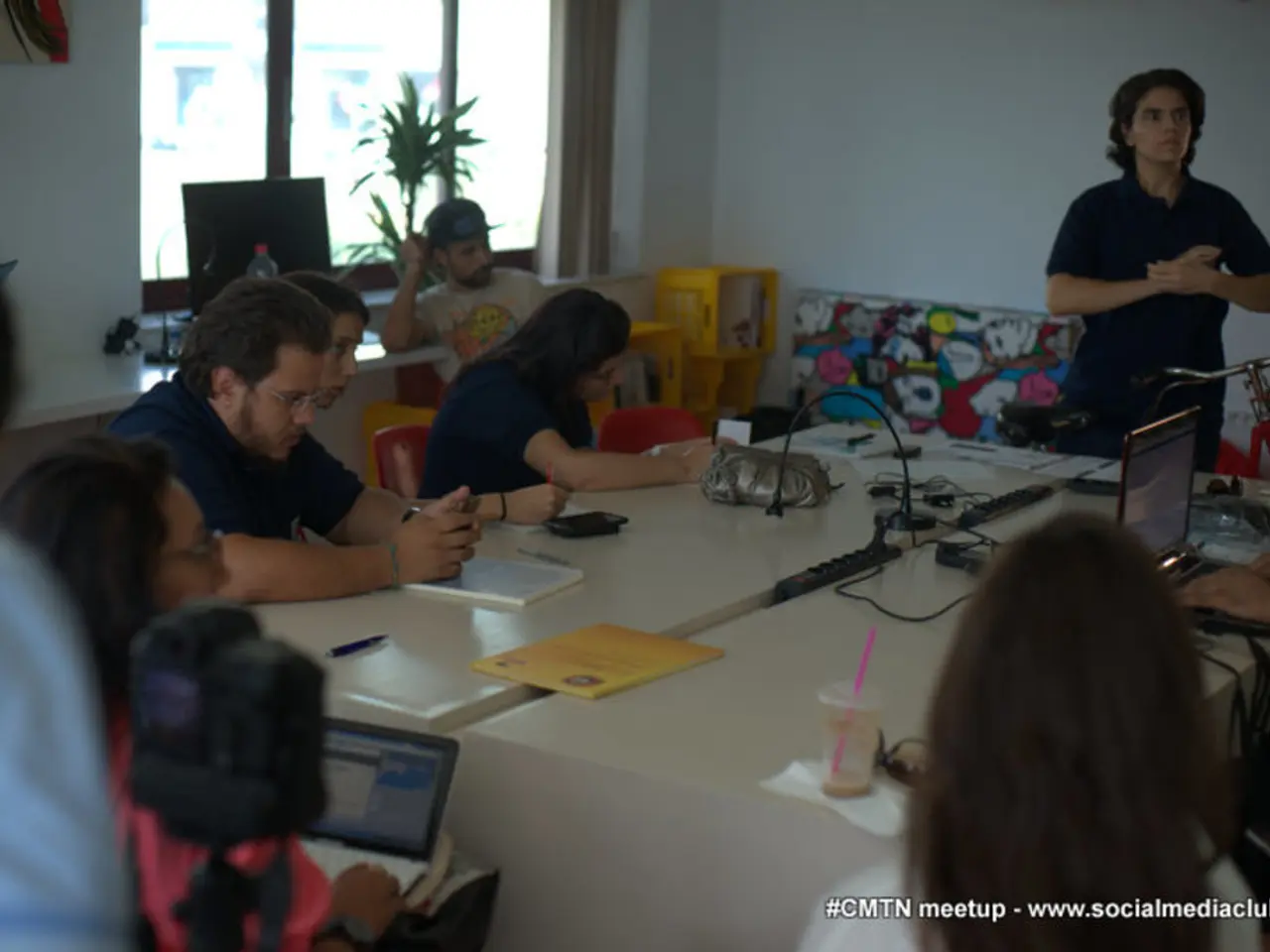Conserving energy for individuals with Multiple Sclerosis: Key points to consider
In the ongoing battle against fatigue, a common symptom for individuals with Multiple Sclerosis (MS), a multifaceted approach has proven effective. Here are some key techniques and strategies recommended by various studies and organizations.
A recent study found no significant difference in results between a group that took part in energy conservation management and a group that received only take-home information. However, the importance of a personalized approach cannot be overstated.
One such approach involves pacing activities and prioritizing tasks to avoid overexertion. By organizing tasks by importance and alternating heavier tasks with lighter ones, individuals can manage their limited energy reserves more effectively.
Taking scheduled rest breaks is another crucial aspect of energy conservation. These breaks help prevent fatigue buildup during the day and allow individuals to respond to their body’s signals for when to pause or reduce activity.
Exercise tailored to an individual's ability plays a significant role in managing fatigue. Activities such as resistance training, compound movements, walking, or swimming can reduce fatigue, improve mood, and enhance quality of life. It's essential to exercise at one’s own pace and include gentle stretching daily.
Cooling techniques, like wearing cooling vests or using cooling pads, and keeping the environment cool, have been found to be beneficial. A 2022 and 2023 review found that cooling therapies reduce fatigue and improve mobility safely.
Tracking activities and symptoms using tools or apps can help identify factors that increase or decrease fatigue, maintain accountability, and help adhere to energy conservation plans.
Occupational therapy interventions can also be beneficial. These interventions educate on energy conservation by structuring routines, modifying environments for accessibility and safety, and teaching pacing and fatigue level monitoring.
In addition to these techniques, power naps, sleeping before going out in the evening or after work, meditation, and yoga can help a person regain energy later in the day. It's important for people with MS to let others in the household know that they should not be disturbed during this time.
For those experiencing symptoms of fatigue, consulting healthcare providers for personalized plans is recommended. While some medications, such as methylphenidate, modafinil, or amantadine, have been prescribed for fatigue management, they have proven no more effective than a placebo for the treatment of fatigue in people with MS.
The Multiple Sclerosis Society offers additional tips for energy conservation, including organizing clothing, sitting down to do tasks, preparing double food portions, limiting laundry loads, using handlebars, keeping supplies close, using easy clothing fasteners, having good lighting and ventilation, using air conditioning, wearing light, cooling clothing, using online grocery shops, working from home, if possible, and delegating intensive tasks to those who offer at-home support.
In conclusion, a combination of physical activity, rest, environmental adaptations, and symptom tracking, tailored to the individual with MS, is considered effective for managing fatigue. Consulting healthcare providers for personalized plans is strongly advised.
- Science has emphasized the importance of a personalized approach to combat fatigue in individuals with Multiple Sclerosis (MS), which includes pacing activities and prioritizing tasks.
- Adopting a scheduled break routine can prevent fatigue buildup during the day, enabling individuals to respond to their body’s signals for rest.
- Customized exercise routines, such as resistance training, compound movements, walking, or swimming, contribute significantly to managing fatigue and improving overall well-being.
- Cooling techniques, like using cooling vests or pads and maintaining a cooler environment, have demonstrated benefits in reducing fatigue and improving mobility.
- The use of digital tools or apps to track activities and symptoms can help identify factors impacting fatigue and aid in adhering to energy conservation plans.
- Occupational therapy interventions can be beneficial for those with MS, as they provide education on energy conservation strategies, adapt routines, modify environments, and teach pacing and fatigue level monitoring.
- Power naps, sleeping before evening outings or after work, meditation, yoga can help individuals regain energy and should be combined with allowing others to respect their rest time.
- Consulting healthcare providers is crucial for developing personalized plans to manage fatigue symptoms, as certain medications have shown no more effectiveness than placebos for treating fatigue in people with MS.




